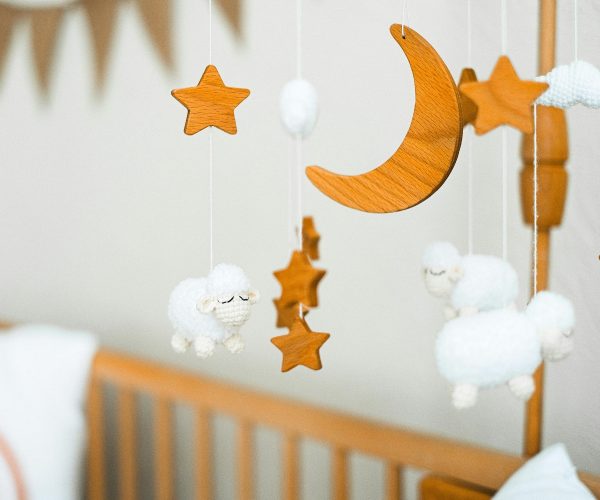
Lighting a kid’s room is more than just screwing in a bulb and calling it a day. It's about creating an environment that’s safe, functional, comforting, and fun, a space where they can play as well as rest. Whether you’re designing for baby, toddler, or child, lighting plays a big role in how the room feels and functions. Let’s break down the essentials of lighting a kid’s room and how to get it just right.
Start with Layers of Light
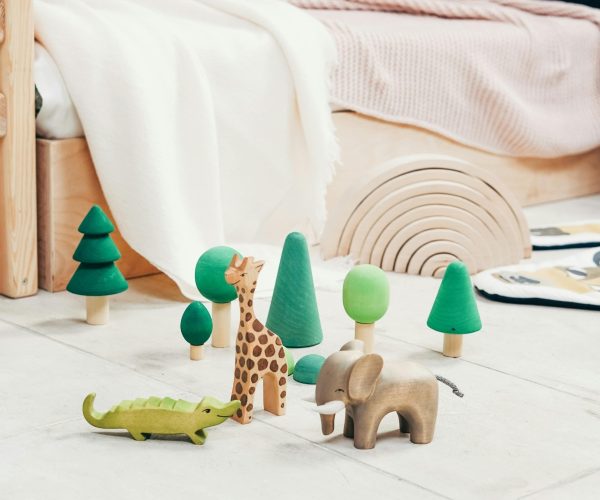
We talk about light layering a lot, and it’s just as important in a kid’s room as any other. Just like in any other room, layered lighting creates flexibility and balance. Try to aim for a mix of the three most important types of lighting to create a comfortable and functional space for your child.
Ambient Lighting (aka general lighting) - This is your main source of light, usually a ceiling fixture or recessed lighting. It should be bright enough to light the entire room evenly, especially during playtime or clean up. Consider a flush mount ceiling light or a fun statement pendant that doubles as decor.
Task Lighting - Perfect for older kids who read, draw, or do homework. Add a desk lamp to light a drawing space. Clip-on bed light for reading are a great option, or even an adjustable wall sconce by the bed for bedtime stories.
Accent Lighting - Add a touch of magic with night lights, string lights, or LED strips under shelves or around the bed. These add warmth and personality and help with night-time comfort.
Choose Kid-Friendly Fixtures
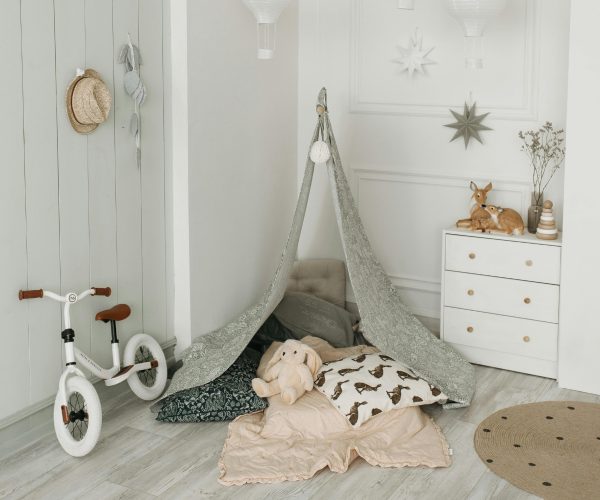
Lighting in a child’s room should be safe and practical while still sparking creativity. Choose enclosed light fittings to protect bulbs from accidental hits (think: flying toys). Try to avoid floor lamps in rooms with very young children, they’re easy to pull over. Look for playful designs such as animal-shaped lamps, themed light shades that match the room’s design, or something that taps into your child’s interests. Use dimmable fixtures or bulbs to adjust brightness based on the time of day, whether it’s time for play or for sleep.
Night-time Lighting
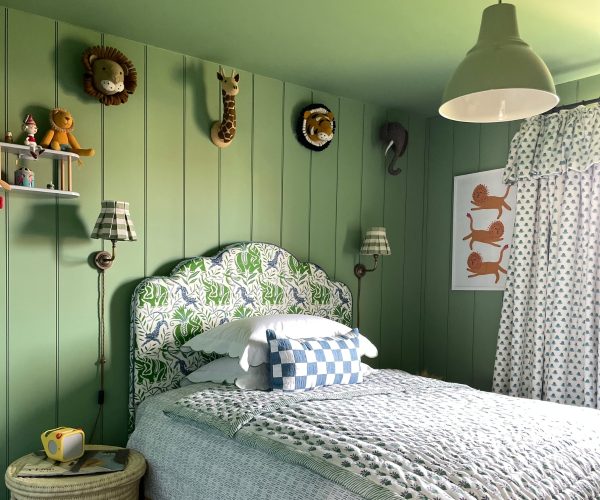
Night lights are a lifesaver for both kids and parents. They help ease bedtime fears and make night-time bathroom trips safer.
• Use soft, warm light (not harsh blue or white) to create a calming vibe. (see our blog about colour temperature here…)
• Try motion-sensor night lights in hallways or bathrooms for late-night wandering.
• Look for plug-in or rechargeable night lights that don’t overheat or require constant battery changes.
Encourage Imagination with Creative Lighting
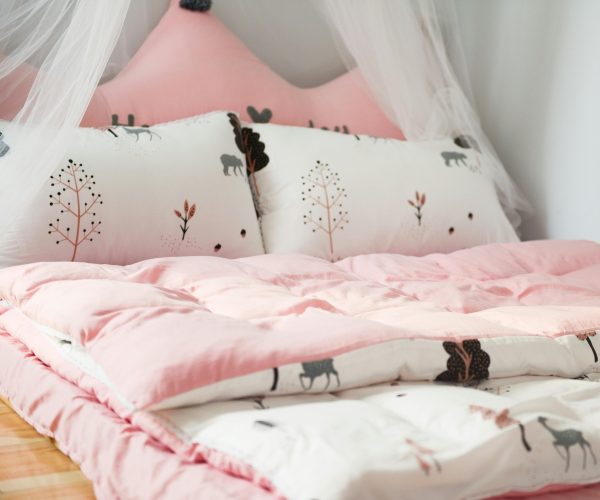
Lighting can do more than brighten a room, it can fuel your child’s imagination.
• Add string lights in fun shapes like clouds, stars, or animals.
• Use a star projector or galaxy lamp to turn the ceiling into a dreamscape.
• Let your child pick out their own lamp, it gives them a say in their space and adds a personal touch.
• Colour-changing bulbs or smart bulbs can create a fun, interactive way to set moods, celebrate holidays, or signal when it’s time to wind down.
Safety First, Always
Kids are notoriously curious and tend to get into places we would rather they didn’t. Your lighting setup needs to be safe and kid-proof.
• Use LED bulbs, they’re energy-efficient and stay cool to the touch.
• Secure cords out of reach and use cord organisers to prevent tripping hazards.
• Avoid breakable materials like glass in lamp bases or shades.
• Make sure any smart lighting or timers are child-safe and easy for parents to control.
The right lighting does more than just brighten a space, it helps kids feel comfortable in their own space. By layering different light sources for calming nights and playful days, choosing fun fixtures, and incorporating safe lighting habits, you can create a space that supports every part of your child’s day.
[related_products is_auto_added="1"]Lighting a kid’s room is more than just screwing in a bulb and calling it a day. It’s about creating an environment that’s safe, functional, comforting, and fun, a space where they can play as well as rest. Whether you’re designing for baby, toddler, or child, lighting plays a big role in how the room […]
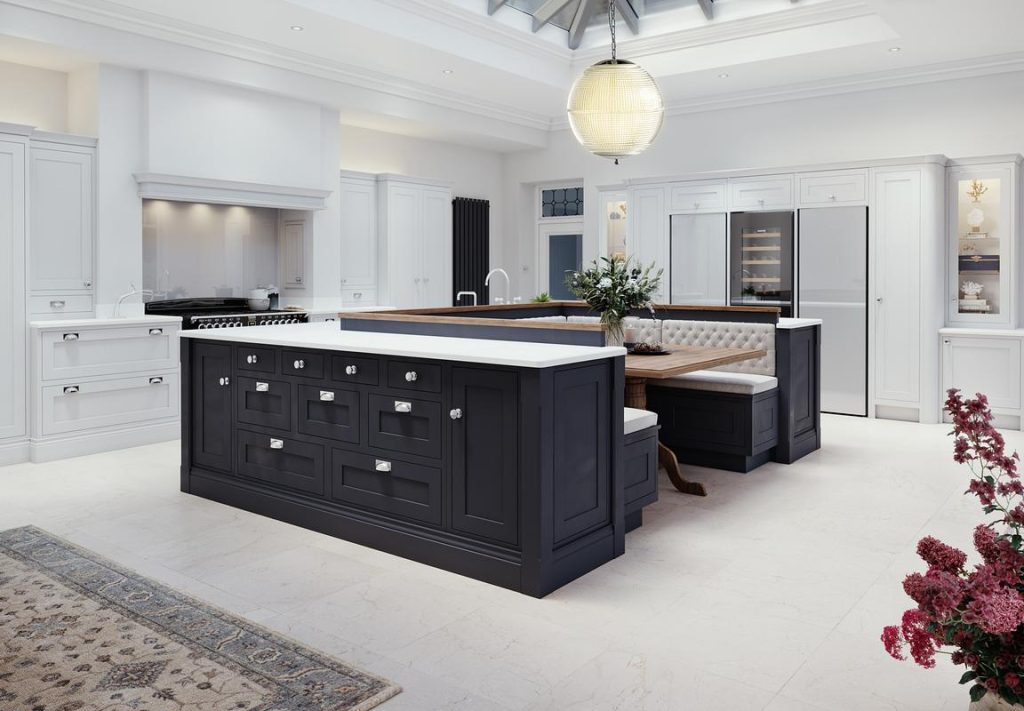
When we think about interior design, we often focus on furniture, rugs, wall colour, or even art. But at Elesi, we know a thing or two about lighting, and nothing defines a space, sets the mood, or makes a design truly shine (literally) like lighting.
Design isn’t just about what you see; it’s the ambience of the space. And lighting plays a major role in all seven elements of design, while helping to differentiate the function of a space. Let’s break it down.
Creating Space

Space is all about dimensions, how large or small a room is, as well as making the most of the space you are working with. There is skill in creating the illusion of space in a small room, and that’s where lighting can become crucial.
The right lighting can make a compact room feel open and airy, and it can create cosy intimacy in a larger space. Think recessed, cooler toned light for a clean, open vibe or layered warm lighting to define different zones within a room.
Understanding Lines

Lines direct movement and create structure in a design. Much in the same way as creating space in smaller rooms using lighting, lines can alter the way we perceive the size of the room we enter. Just as with creating space using brightness and temperature, lighting can be used effectively to create lines.
Vertical lines, such as floor lamps or singular pendants offer the illusion of height by drawing the eye upward, while wider, more horizontal light fittings widen the space and create a focal point.
Defining Form

Form refers to the overall shape of objects in a space, such as sofas, cushions, coffee tables, artwork, and ornaments. And this extends to lighting as well. Striking the balance between soft curves, sharp lines, and natural forms defines the design of your space.
Light fixtures themselves can serve as focal points by contrasting or complementing your rooms existing forms. Using a linear lantern can break up the soft curves of a cosy interior, while a round pendant can bring a little warmth to a modern space.
Light

We have talked about how light affects each of the previous elements, however it’s important to address lighting as its own element. After all, this one is our specialty! Besides the few points we have already touched on, natural and artificial light influence so much more, such as colour, mood, and functionality.
Warm lighting makes a space feel inviting, while cool lighting is crisp and energising, perfect for kitchens or workspaces where clear and bright lighting is essential. Layering ambient, task, and accent lighting ensures every space is both beautiful and practical. This can be achieved easily by pairing Dim to Warm Downlights with designer pendants.
Colour Palette

Lighting doesn’t just affect how we see colour, it transforms it. Have you ever noticed how the paint you have chosen looks different in the shop to when you bring it home? That’s lighting at work. Choosing the right bulbs and fixtures helps maintain the true colours of your design vision.
Warmer or cooler temperature lights can vastly change the way colours are perceived, but CRI plays a huge role in this as well. Sunlight reflects colour most accurately, while some low CRI lighting can leach colour, making it appear duller. High CRI lighting enhances the way colour is reflected and makes those colours pop exactly as they were intended to in your home. To learn more about this, check out our blog about how high CRI lighting works.
Texture
The sixth element of design is texture. Once again, we see that the combination of texture can complement and contrast. Lighting affects the way that texture is emphasised, whether it’s an industrial inspired brick wall washed with soft uplighting or a plush velvet sofa bathed in a cosy glow. Strategic lighting placement can highlight the richness of surfaces, adding depth and character to a space. How you light these textures will determine the overall effect of your design, and creating shadows is as important as the light itself when it comes to these defining features.
Patterns

Pattern brings visual interest, and a bold pattern can make or break a space. Using too much of a pattern can easily overwhelm the intended design. Using a pattern, particularly a bold one sparingly is key to tying the design together.
Having said this, a larger space can benefit from alternating bold patterns with solid colours and textures. Lighting can bring patterns to a space without overwhelming the balance. Prismatic glass can cast a wonderful display of light that can become a design feature in and of itself.
Understanding the 7 elements of design is key to creating a cohesive and stylish space—but lighting ties it all together. Whether you’re designing a home, office, or commercial space, the right lighting choices can elevate the experience from ordinary to extraordinary.
Need help choosing the perfect lighting for your design? We have plenty of guides available to point you in the right direction, from how to style a kitchen island, to what colours go with green, as well as technical lighting guides to help you light your space effectively.
[related_products is_auto_added="1"]When we think about interior design, we often focus on furniture, rugs, wall colour, or even art. But at Elesi, we know a thing or two about lighting, and nothing defines a space, sets the mood, or makes a design truly shine (literally) like lighting. Design isn’t just about what you see; it’s the ambience […]
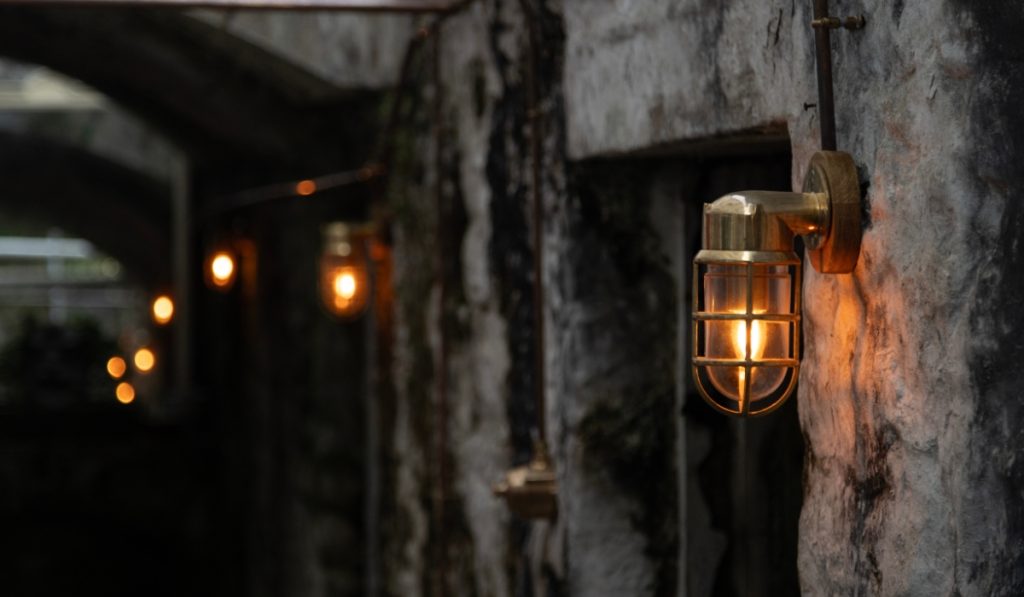
PIR lighting, or Passive Infrared lighting, is revolutionising the way we illuminate our homes and businesses. It combines energy efficiency with enhanced security, making it an ideal choice for homeowners and commercial property owners alike. But what exactly is PIR lighting, and how can it benefit you? In this guide, we'll explore everything you need to know about PIR lighting, from how it works to its numerous advantages, installation tips, and the best places to use it.
What is PIR Lighting?
PIR lighting uses Passive Infrared sensors to detect movement by measuring the infrared radiation (heat) emitted by people, animals, and objects. When the sensor detects motion within its field of view, it automatically switches the light on, providing illumination only when needed. This makes PIR lighting not only energy-efficient but also highly practical for security and convenience.
How Does PIR Lighting Work?
PIR sensors are designed to detect changes in infrared radiation levels. When a warm object, such as a person or animal, moves within the sensor's range, the infrared energy is detected, triggering the light to turn on. Once the movement stops or the person leaves the area, the light automatically switches off after a pre-set delay.
You can buy lighting with PIR lighting built in, or attach a PIR sensor to your existing lighting, so there is no need to compromise on the design you prefer.
Key Benefits of PIR Lighting
Energy Efficiency
PIR lighting only turns on when movement is detected, helping to conserve energy and reduce electricity bills. It's an eco-friendly solution that prevents unnecessary power usage.
Enhanced Security
By automatically illuminating dark areas when motion is detected, PIR lights act as a deterrent to potential intruders. This makes them ideal for use as outdoor security lights.
Convenience and Safety
No more fumbling for light switches in the dark! PIR lighting provides hands-free illumination, making it easier and safer to navigate areas like driveways, garages, hallways, and staircases.
Longevity of Light Bulbs
Since PIR lights are only on when needed, the lifespan of the light bulbs is extended, saving you money on replacements and maintenance.
Best Places to Use PIR Lighting
• Outdoor Security Lighting – Ideal for driveways, gardens, and pathways to deter intruders and improve safety.
• Garages and Sheds – Provides automatic illumination when entering or exiting.
• Hallways and Staircases – Enhances safety, especially at night.
• Bathrooms and Utility Rooms – Convenient for hands-free lighting.
Choosing the Right PIR Light for Your Needs
When selecting a PIR light, consider the following factors:
• Detection Range and Angle – Choose a model with a range and angle suitable for the area you want to cover.
• Adjustable Timer Settings – Opt for lights with adjustable timers to control how long they stay on after detecting motion.
• Light Intensity and Colour Temperature – Select a brightness level and colour temperature that suits the ambience you want to create.
• Weather Resistance – For outdoor applications, ensure the light is weatherproof (look for IP ratings like IP44 for covered areas, or higher for more exposed spaces).
Installation Tips for PIR Lighting
• Placement Matters – Position the sensor at a height and angle that maximises detection while minimising false triggers from pets or nearby traffic.
• Test Before Fixing – Test the light and sensor settings before permanently fixing them in place.
• Safety First – Always follow safety guidelines or consult a qualified electrician for installation, especially for outdoor or high-voltage units.
Maintenance and Troubleshooting
To keep your PIR lighting functioning optimally:
• Clean the Sensor Regularly – Dust and dirt can affect sensitivity.
• Check for Obstructions – Ensure there are no obstacles blocking the sensor's field of view.
• Adjust Sensitivity and Timer Settings – Fine-tune these settings to reduce false activations and optimise energy usage.
PIR lighting is more than just a modern lighting solution—it's a smart choice for energy savings, enhanced security, and improved convenience. With the right selection and proper installation, you can transform your space into a safer and more efficient environment.
FAQ's
Most PIR lights are equipped with light sensors that prevent them from turning on during daylight hours, conserving energy.
Yes, but many models have adjustable sensitivity settings to minimise false triggers caused by small animals.
Outdoor PIR lights are typically weather-resistant, but always check the IP rating to ensure suitability for outdoor use.
PIR lighting, or Passive Infrared lighting, is revolutionising the way we illuminate our homes and businesses. It combines energy efficiency with enhanced security, making it an ideal choice for homeowners and commercial property owners alike. But what exactly is PIR lighting, and how can it benefit you? In this guide, we’ll explore everything you need […]
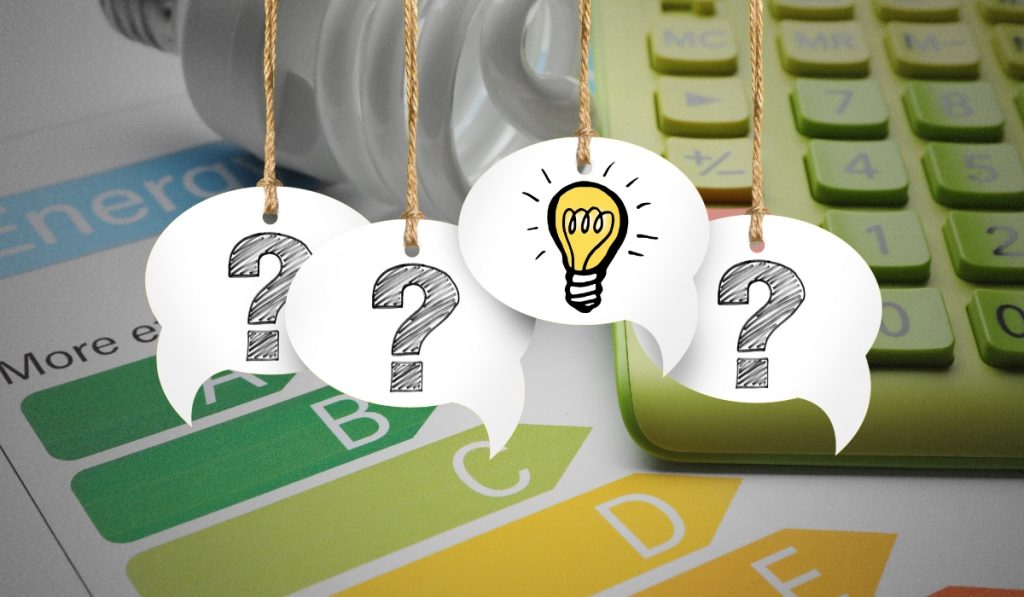
It often comes as a shock to many who are buying bulbs to see that familiar products are energy rated F or G. This has caused some confusion and a little bit of annoyance as there seemed to be no explanation why previously efficient LED bulbs are now being rated comparatively low. But there’s a perfectly logical explanation for this, and it’s not because your bulbs have suddenly decreased in efficiency.
Since September 2021, the familiar A++ to E scale has been replaced with a simpler A to G scale. This update, introduced by the European Union and adopted in various regions, aims to make it easier for consumers to understand the efficiency of lighting products. But what does this mean for you? Let’s break down the differences between the old and new energy ratings and what to look for when purchasing bulbs.
Why Did the Energy Ratings System Change?
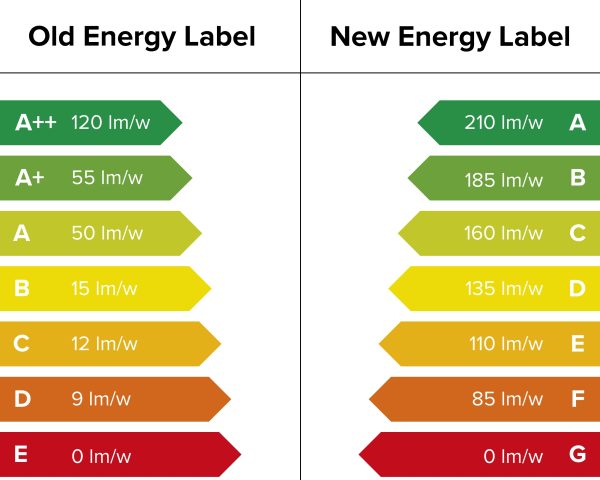
The previous energy rating system, which used categories from A++ to E, became outdated due to advancements in lighting technology. Many LED bulbs were rated A+ or higher, making it difficult for consumers to distinguish between products. A further issue with this scale was that with so many higher rated bulbs on the market, there was no incentive whatsoever for manufacturers to produce more energy efficient products.
To provide a clearer and more realistic scale, regulators decided to reintroduce a simpler A to G rating. With this, all pre-existing lightbulbs are being moved down the scale to make way for more energy efficient products. This opens up a gap at the top end of the scale, and pushes manufacturers to begin developing to reach a higher standard of efficiency to reach that coveted A grade.
Differences Between the Old and New Ratings
The New Scale is Stricter
Under the old system, many LED bulbs received an A+, A++, and A+++ rating. With the new scale, those same bulbs might now be rated B, C, or even lower. This doesn’t mean they are less efficient; rather, the new system sets higher efficiency standards for achieving an A rating.
More Room for Future Advancements
The revised scale is designed to leave room for future energy-efficient innovations. Under the old system, almost all LEDs clustered around the highest ratings, leaving little room to differentiate truly ground-breaking advancements. Now, the A rating is reserved for future, exceptionally efficient bulbs.
QR Codes for More Information
New energy labels include QR codes that consumers can scan to access detailed product information from the European Product Registry for Energy Labelling (EPREL). This feature enhances transparency, allowing shoppers to make more informed decisions.
How to Choose Energy-Efficient Bulbs Now
Don’t Be Alarmed by Lower Ratings - A bulb previously rated A++ might now be labeled C or D under the new system. This doesn’t mean it's inefficient; it simply reflects the stricter criteria.
Look at Lumen Output - Instead of focusing solely on wattage, check the lumen output (brightness) to ensure the bulb meets your needs.
Check the Energy Consumption (kWh/1000h) – This figure remains a reliable indicator of how much electricity a bulb will use over time.
Use the QR Code – If you’re unsure, scan the QR code on the label for more details on the product’s performance and efficiency.
Final Thoughts
The new energy rating system provides a more transparent and future-proof method for assessing light bulb efficiency. While the energy ratings may seem lower at first glance, they better reflect the advancements in lighting technology and encourage the development of even more energy-efficient products. Next time you shop for bulbs, focus on the actual energy consumption and performance rather than just the letter rating. By doing so, you’ll make a smart, energy-efficient choice that benefits both your wallet and the environment.
[related_products is_auto_added="1"]It often comes as a shock to many who are buying bulbs to see that familiar products are energy rated F or G. This has caused some confusion and a little bit of annoyance as there seemed to be no explanation why previously efficient LED bulbs are now being rated comparatively low. But there’s a […]
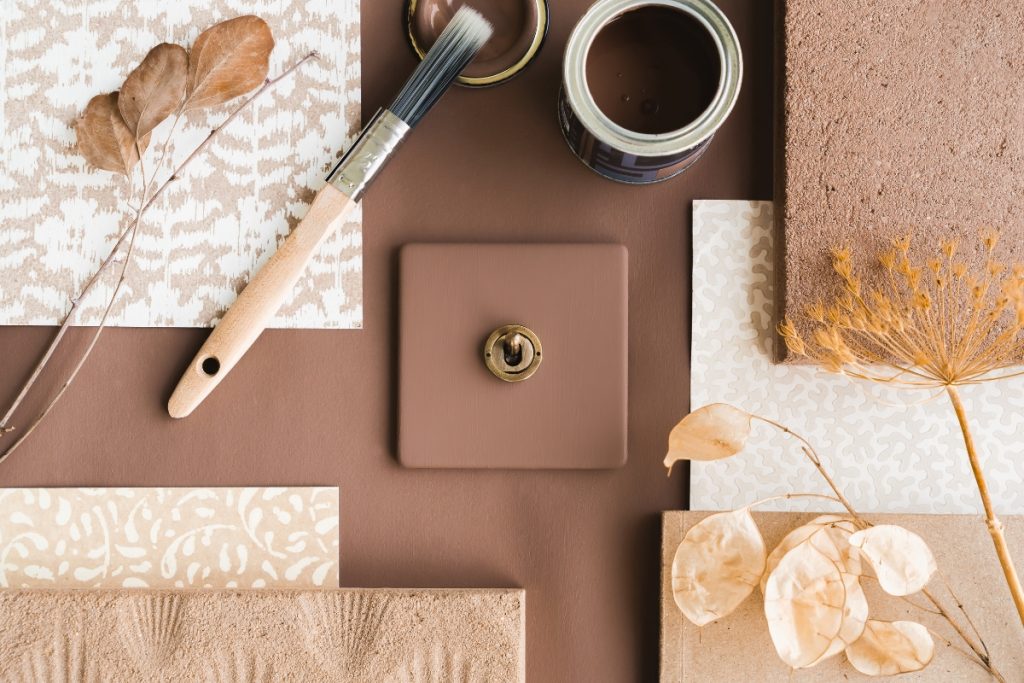
As we step into the new year, interior design continues to evolve with the seasons, bringing fresh ideas that harmonise aesthetics, functionality, and sustainability. With the announcement of Pantones Colour of the Year 2025, Mocha Mousse, the stage has been set for what to expect in the coming year. Join us as we explore the top interior design trends that are set to shape 2025.
Biophilic Design: Coordinated Nature
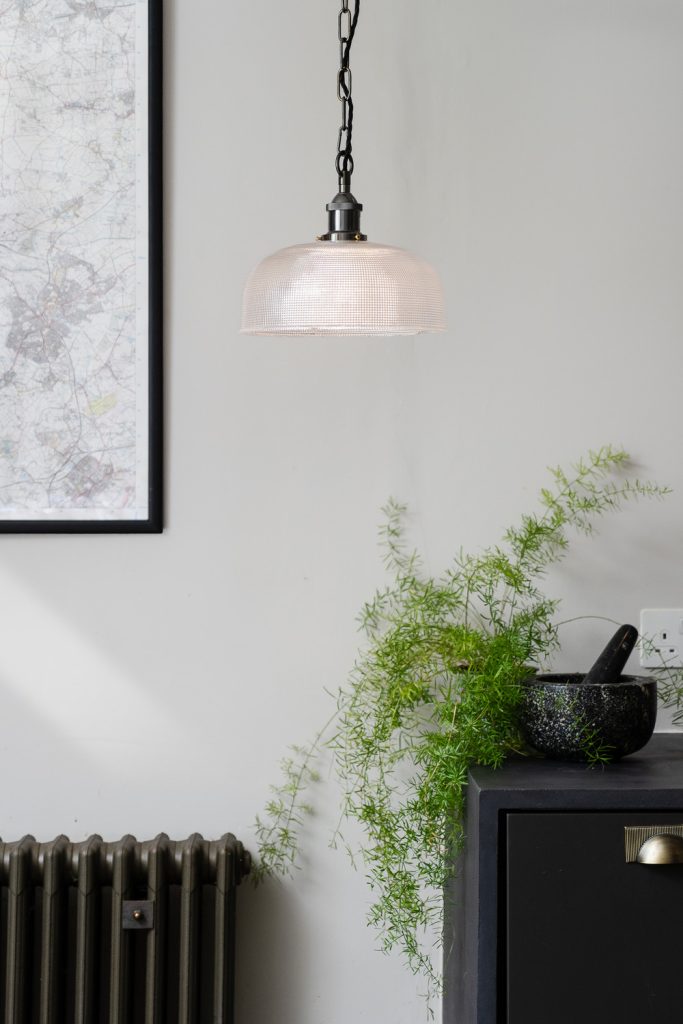
Nature-inspired interiors will remain a dominant trend in 2025. Biophilic design goes beyond adding a few plants. Living walls or vertical gardens, along with the use of natural materials like reclaimed wood, stone, and bamboo, are becoming increasingly popular. Large windows and skylights maximise natural light and create a balance between the outdoors, and a cosy interior. This approach not only enhances aesthetics but also boosts mental well-being by fostering a calming environment.
Upcycling: Sustainable Décor
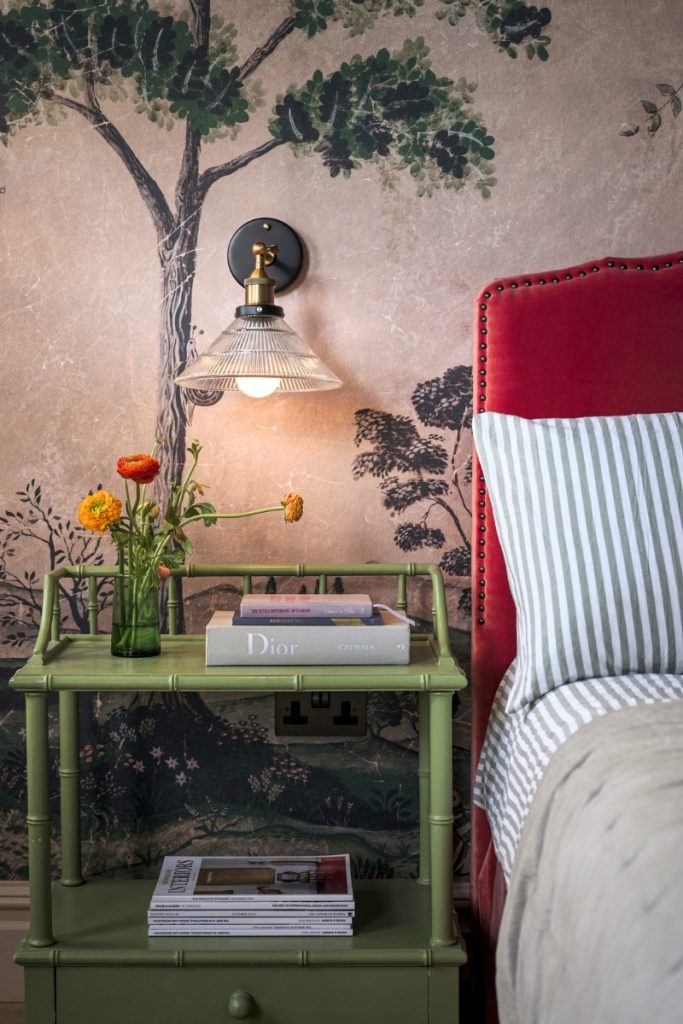
Sustainability continues to influence every aspect of design and will likely increase in years to come. In 2025, the focus shifts to embracing circular design principles. Upcycled furniture crafted from repurposed materials and vintage pieces combined with contemporary elements create a unique blend. Many homeowners are also opting for eco-friendly paints and finishes. Consumers are increasingly drawn to items with stories, supporting ethical brands and artisans who prioritise environmental responsibility.
Bold Colours and Statement Patterns
Neutral tones have dominated interiors for years, and while Pantones Mocha Mousse will remain a firm favourite throughout 2025, we will see this stunning hue come to life with a bold colour palette. Rich, jewel tones like emerald green, sapphire blue, and deep burgundy are making a splash, along with statement wallpapers featuring bold patterns, geometric designs, and abstract art. Creative use of colour blocking adds depth and personality to spaces. These striking choices create environments that feel dynamic and energising.
Minimalism with a Twist
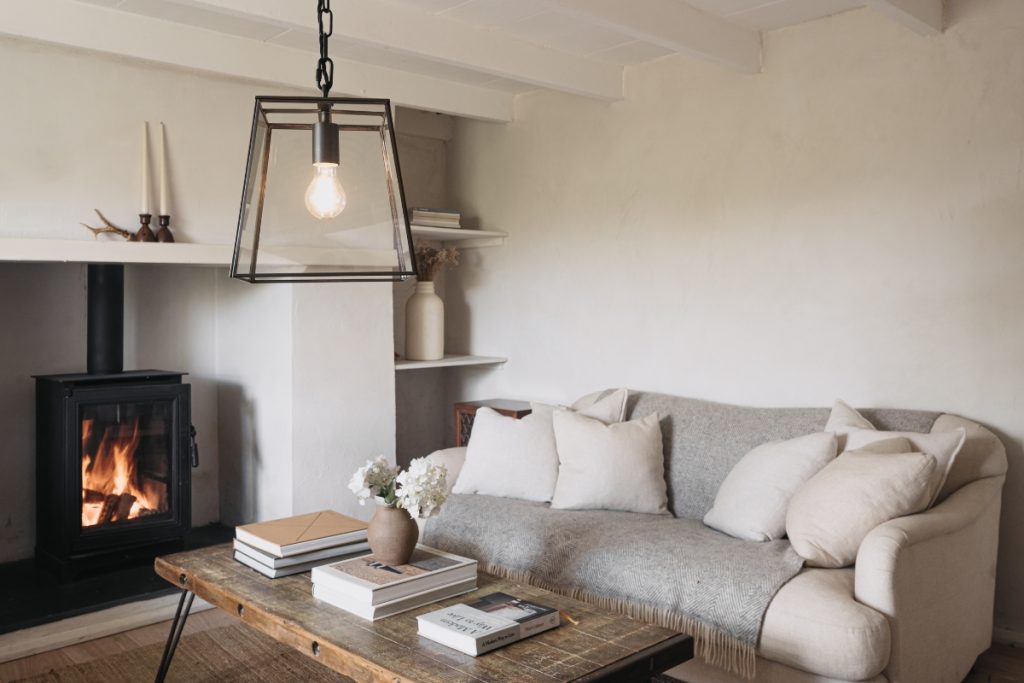
While minimalism remains popular, 2025’s version is warmer and more inviting. Rounded furniture with softer edges is gaining traction, paired with plush, tactile fabrics like boucle and velvet. Neutral bases are enhanced by subtle pops of colour and texture. This style balances simplicity with comfort, creating a more approachable aesthetic.
High-Tech and Smart Homes
Technology integration continues to reshape interiors, and in 2025, smarter, more intuitive designs are becoming the norm throughout the home. Smart lighting systems adapt to your mood and schedule, while integrated home automation simplifies daily life with voice-activated appliances and temperature controls. Sleek, tech-inspired furniture with wireless charging capabilities combines convenience and innovation.
Personalisation and Eclectic Styling
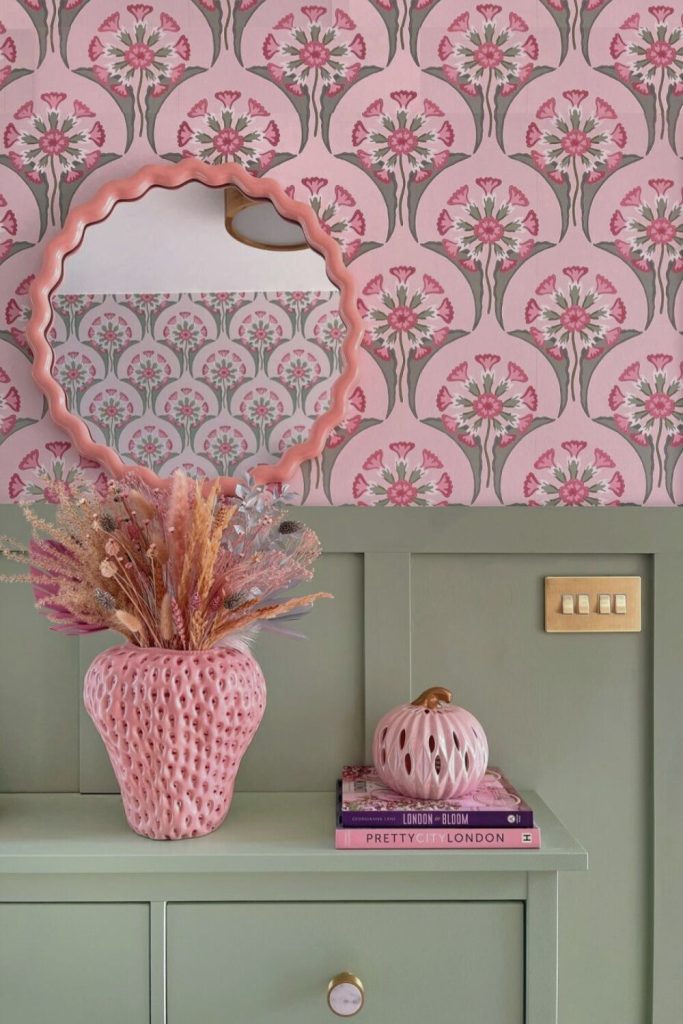
2025 celebrates individuality, moving away from cookie-cutter designs. Mixing and matching styles and eras to reflect personal taste is a key element. Incorporating heirlooms and meaningful decor items further enhances the sense of individuality. Custom art pieces and handcrafted items also play a significant role in telling unique stories. Eclectic interiors offer endless possibilities for creativity and authenticity.
Wellness-Oriented Spaces
Well-being takes center stage in interior design this year. Homes are becoming sanctuaries with meditation corners or wellness rooms, air-purifying plants, and materials that enhance air quality. Furniture designed for ergonomic comfort, such as adjustable desks and supportive seating, is increasingly sought after. These features create spaces that nurture both body and mind.
Statement Lighting Fixtures
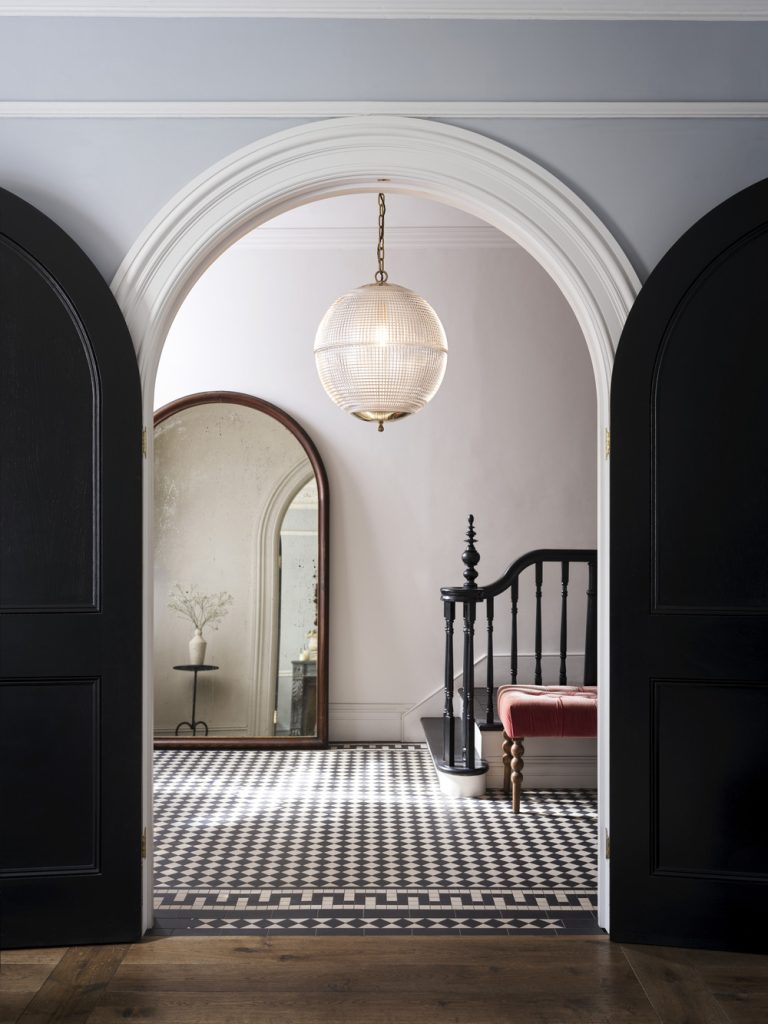
Lighting is more than just functional; it’s a key design statement. In 2025, glass pendant lights are in vogue. Sculptural glass designs that double as art are becoming more prevalent, alongside warm, layered lighting schemes that add ambience and drama. Bold lighting choices are turning into focal points in modern interiors.
Retro-Inspired Decor
Nostalgia remains a powerful force in design. Retro elements from the 1970s and 1980s are making a comeback, including curved furniture and mid-century modern silhouettes. Groovy, funky patterns paired with vibrant colours add a playful, nostalgic touch. Retro appliances with modern functionality are another highlight of this trend.
Multifunctional and Flexible Spaces
With remote work and hybrid lifestyles, the need for adaptable spaces is more relevant than ever. Modular furniture that can be reconfigured, hidden storage solutions to maximize space, and convertible spaces that transition seamlessly from work to leisure are essential. Designing with flexibility in mind ensures homes remain functional and future-proof.
Final Thoughts
The interior design trends of 2025 are all about personalization, sustainability, and creating meaningful connections with our surroundings. Whether you’re drawn to the serenity of biophilic design or the boldness of maximalist lighting, there’s something for everyone to embrace this year. As you explore these trends, remember that the best designs are those that reflect your personality and lifestyle—making your space truly feel like home.
[related_products is_auto_added="1"]As we step into the new year, interior design continues to evolve with the seasons, bringing fresh ideas that harmonise aesthetics, functionality, and sustainability. With the announcement of Pantones Colour of the Year 2025, Mocha Mousse, the stage has been set for what to expect in the coming year. Join us as we explore the […]
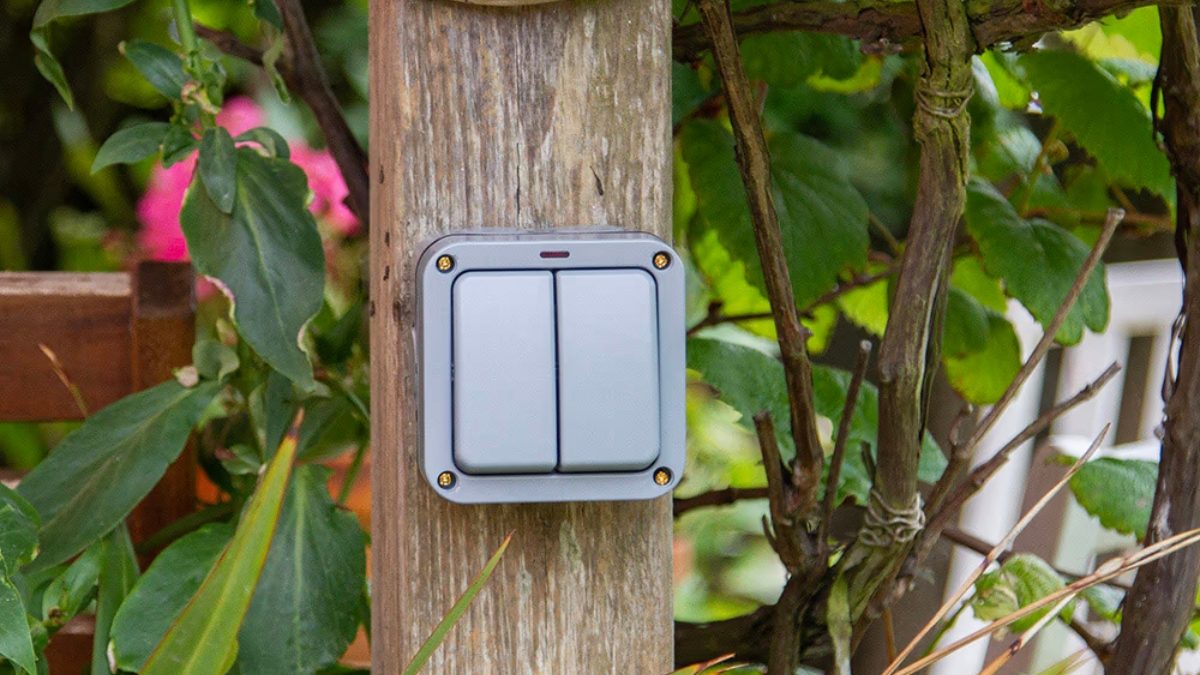
Outdoor sockets are a game-changer for UK homeowners who want to make the most of their garden. They are essential for powering garden lighting, security lights, water features, and appliances such as lawnmowers and leaf blowers, and it’s imperative that these power points are safe and reliable in various weather conditions. In this guide, we’ll explore what you need to look for when buying outdoor sockets and switches.
Key Considerations When Buying Outdoor Sockets and Switches
IP Rating: Waterproof and Dust-proof Standards
UK weather is notoriously unpredictable, which makes it crucial to install IP-rated weatherproof sockets for outdoor use. But what does IP rated actually mean?
The Ingress Protection rating, most commonly known as IP rating, is critical for outdoor electricals. This two-digit number shows protection levels against solids (dust and debris) and liquids (rain and standing water).
In the UK, the minimum recommended IP rating for outdoor is IP44 when placed in a sheltered location such as a covered porch, but higher ratings offer better protection and are more suitable for uncovered areas. Here’s a quick overview:
- IP44: Protects against splashes from any direction and solid objects larger than 1mm. Suitable for areas with shelter such as a covered porch.
- IP65: Fully dust-tight and protected against low-pressure water jets. Ideal for open areas exposed to rain or cleaning.
- IP66: Dust tight and resistant to high-pressure water jets
- IP67: Dust tight and resistant to high-pressure water jets and temporary immersion
- IP68: For permanent immersion in water; a good waterproof rating for up to 1m of immersion, though rarely needed for standard garden use.
For more information on the IP ratings, visit our blog 'IP Rated Lighting Guide'
Material Durability

Look for sockets and switches made of robust materials like UV-resistant polycarbonate, which prevents cracking and discolouration due to sun exposure.
Stainless steel, aluminium, and even brass may be suitable for aesthetic and durable installations. Ensure outdoor sockets have weatherproof covers that seal securely when not in use. These prevent accidental exposure to moisture or tampering. Some designs will include a screw lid with a rubber seal.
Number of Outlets and Features
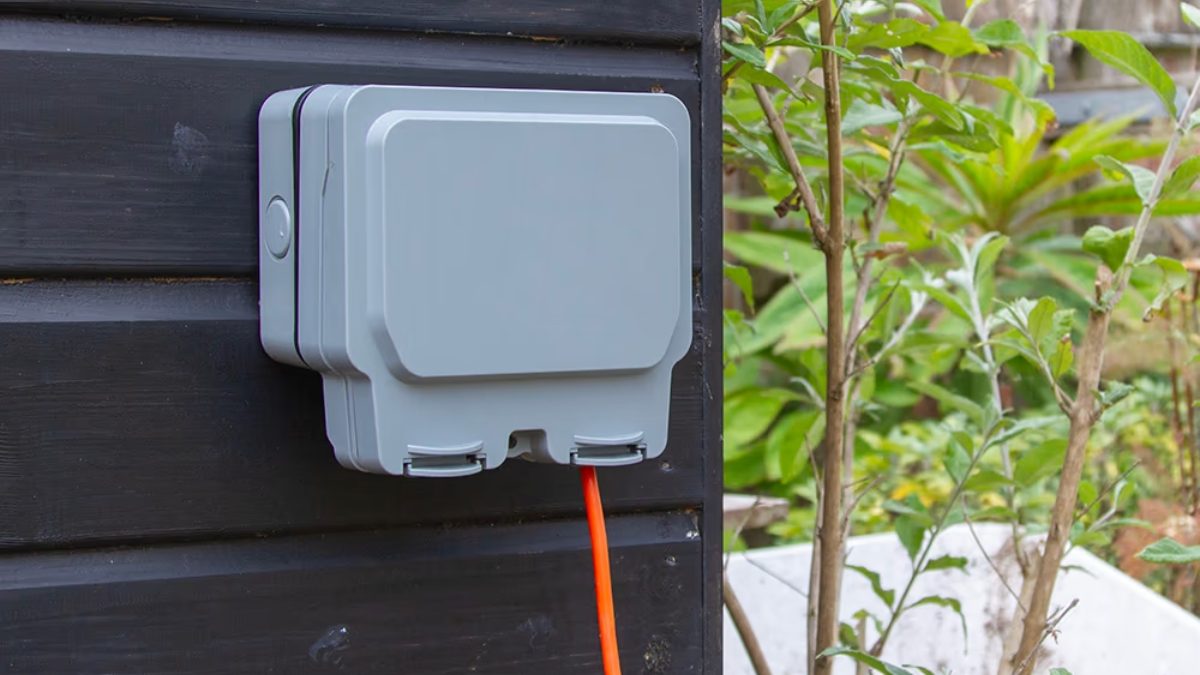
Single vs. Double Sockets: Consider the number of devices you need to power simultaneously.
Smart Features: Wi-Fi-enabled sockets let you control devices remotely via apps.
USB Ports: Useful for charging small devices without an adapter.
Ensure the socket is compatible with the existing circuit and complies with UK safety standards.
Outdoor installations often require Residual Current Device (RCD) protection for safety.
Tips for Maintaining Outdoor Outlets
- Regularly inspect for wear, cracks, or corrosion.
- Keep covers clean to ensure a proper seal.
- Replace damaged units immediately to avoid safety risks.
By choosing the right IP rating and features, you can ensure your outdoor sockets and switches provide long-lasting and safe power for your garden or outdoor activities.
Do I need an RCD for my outdoor socket or switch?
An RCD (Residual Current Device) is a safety device designed to protect against electric shocks and reduce the risk of electrical fires. It works by detecting any imbalance in the electrical current, for example as when electricity is flowing through an unintended path (due to faulty wiring or even through an electric shock in a person), and shuts off the power almost instantly.
For outdoor installations, RCD protection is essential because outdoor sockets and switches are more exposed to moisture, dirt, and accidental damage, all of which increase the risk of electric shock. In the UK, current regulations require RCD protection for most outdoor electrical installations, particularly when powering portable equipment like lawnmowers, hedge trimmers, or pressure washers. If your fuse box doesn’t already include RCD protection, you should install outdoor sockets with built-in RCDs or use a plug-in RCD adaptor for safety.
We hope you have found this guide helpful,
[related_products is_auto_added="1"]Outdoor sockets are a game-changer for UK homeowners who want to make the most of their garden. They are essential for powering garden lighting, security lights, water features, and appliances such as lawnmowers and leaf blowers, and it’s imperative that these power points are safe and reliable in various weather conditions. In this guide, we’ll […]
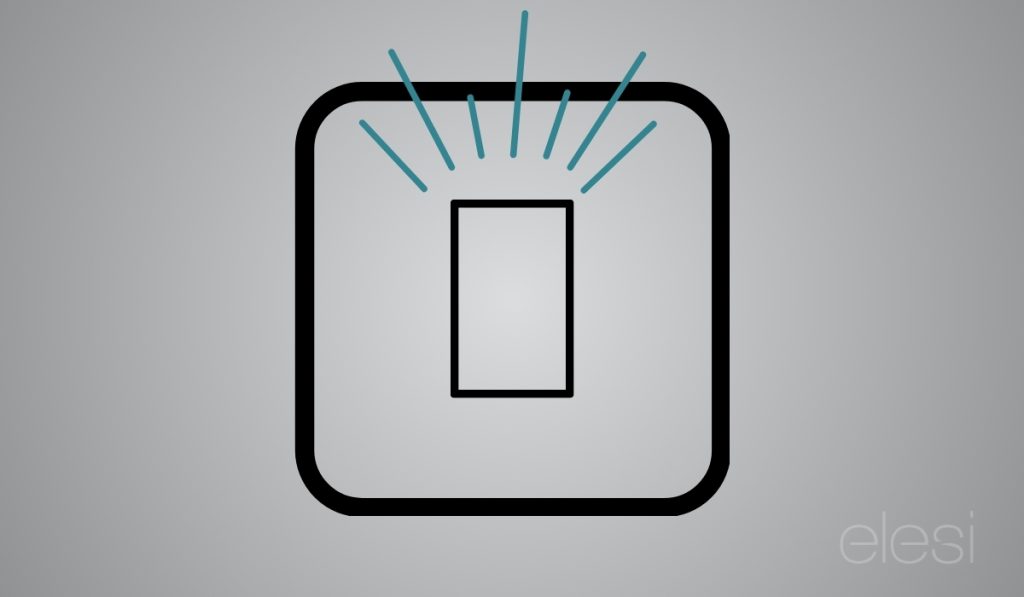
With smart technology and energy saving at the forefront of home improvements, a kinetic switch is a game changing solution.
Unlike traditional switches that rely on an external power source, kinetic switches use the principle of kinetic energy to function. These switches harvest the energy generated from the physical act of pressing the switch, eliminating the need for wiring or batteries. Let’s dive a little deeper into how this actually functions.
How Does a Kinetic Switch Work?
The core of a kinetic switch lies in its energy-harvesting technology. Here's an easy-to-understand breakdown of how it works:
- Energy Generation: When you press the switch, the mechanical motion creates kinetic energy.
- Energy Conversion: This kinetic energy is then converted into electrical energy using a tiny internal generator.
- Signal Transmission: The generated electrical energy powers a signal transmitter, which sends a wireless signal to a receiver (e.g., a light fixture, smart hub, or other device).
- Action Execution: The receiver interprets the signal and performs the intended action, such as turning on a light or operating a device.
Advantages of Kinetic Switches
- Wireless and Battery-Free: Kinetic switches do not need electrical wiring or batteries, making them incredibly versatile and environmentally friendly.
- Easy Installation: Because they don’t require wiring, installation is quick and straightforward. This makes them ideal for retrofitting older buildings or adding controls to places where wiring would be impractical.
- Eco-Friendly: By eliminating the need for disposable batteries, kinetic switches help reduce electronic waste.
- Low Maintenance: With no batteries to replace and no wires to manage, these switches are practically maintenance-free.
- Flexibility: They can be placed anywhere, such as on walls, furniture, or even portable surfaces, offering unmatched convenience.
Applications of Kinetic Switches
Kinetic switches are gaining popularity in a variety of settings due to their flexibility and eco-friendly nature. Here are just a few ways you can use kinetic switches:
Smart Homes: Controlling lights, fans, or other smart devices.
Commercial Spaces: Energy-efficient control systems for offices, conference rooms, or retail spaces.
Industrial Use: Streamlining operations in manufacturing plants and warehouses.
Outdoor Settings: Weather-resistant applications like garden lighting or pool controls.
Retrofitting Older Properties: Operating lighting in a building where complex wiring is impractical or impossible.
Rental Properties: Adding convenient switches in a rented property without rewiring.
Limitations of Kinetic Switches
While kinetic switches are innovative and highly practical, they come with certain limitations:
- Range: The wireless signal may have a limited range, depending on the environment and the receiver's sensitivity.
- Compatibility: These switches may require compatible receivers or smart systems to function seamlessly.
- Cost: The initial cost of kinetic switches can be higher than traditional switches due to the advanced technology involved.
The Future of Kinetic Switches
As the demand for sustainable and energy-efficient solutions grows, kinetic switches are poised to become a regular feature as part of smart home ecosystems and industrial applications. With advancements in wireless communication protocols and energy-harvesting technology, we can expect even more innovative and cost-effective designs in the future.
In conclusion, a kinetic switch represents a leap forward in the way we think about energy use and device control. By harnessing the power of motion, these switches offer a sustainable, maintenance-free alternative to traditional electrical systems, making them a smart choice for homes and businesses alike.
[related_products is_auto_added="1"]With smart technology and energy saving at the forefront of home improvements, a kinetic switch is a game changing solution. Unlike traditional switches that rely on an external power source, kinetic switches use the principle of kinetic energy to function. These switches harvest the energy generated from the physical act of pressing the switch, eliminating […]

As autumn arrives, the days grow shorter, and the crisp air sets in, it’s the perfect time to make your home into a more inviting and cosy space. Here’s our simple guide to lighting your home this autumn.
Embrace Warm Tones
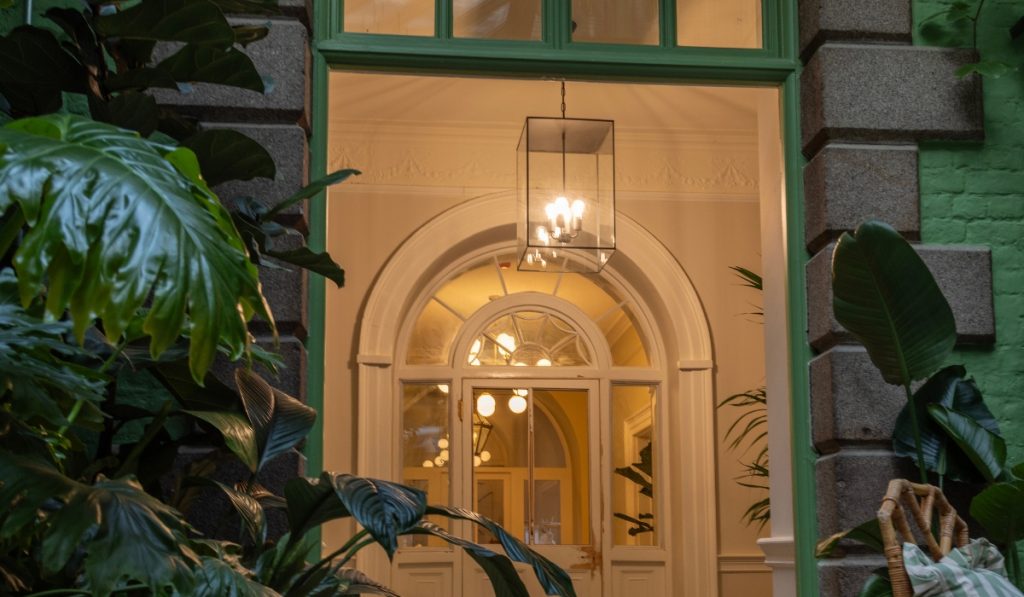
Switch to bulbs with warmer tones. Lights with colour temperatures from 1800K to mimic the glow of candles and fireplaces up to 3000k for a more sunlight effect, giving your home a warm and cosy vibe. This helps counter the cooler outdoor temperatures and makes your home feel like a welcoming place to settle into.
Layer Your Lighting
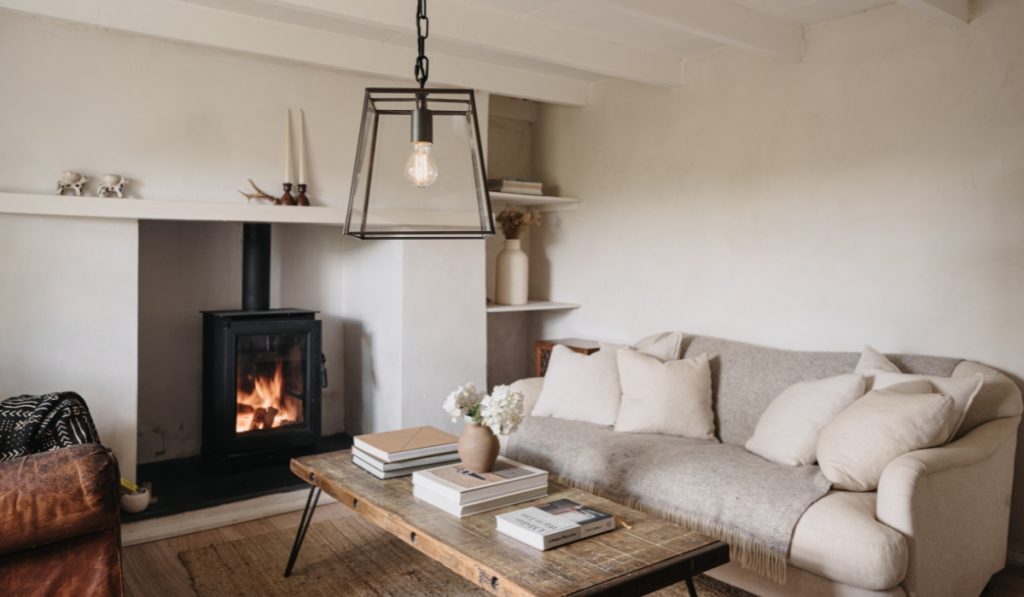
Light layering creates depth and atmosphere. Use a combination of ambient, task, and accent lighting. For example, wall lights and ceiling pendants work as functional yet stylish task lighting. Create cosy corners with soft, low-intensity lighting. Add a table or floor lamp to reading nooks or your favourite relaxing space to encourage those slow, restful moments. Swap your bulbs to Dim to Warm for the best way to adjust the ambience of your lighting. And don’t forget accent lighting; string lights, candles, or lanterns add character and charm to your space.
Maximise Natural Light
Take advantage of the daylight that autumn has to offer by letting in as much natural light as possible. Sheer curtains or strategically placed mirrors can help reflect and amplify the light, making your space feel brighter and more open before the sun sets.
Introduce Outdoor Lighting
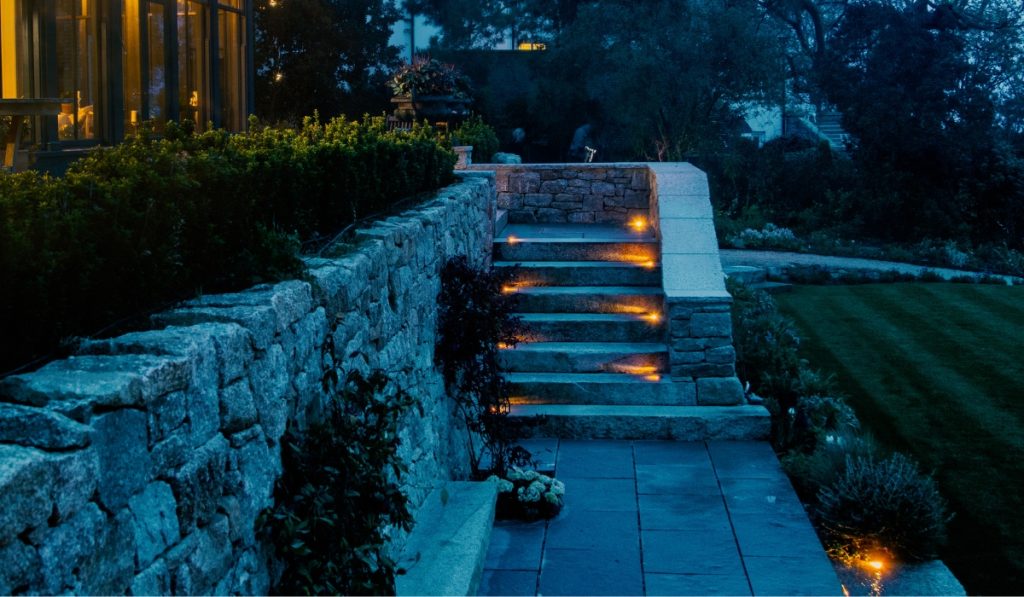
With shorter days comes the need for more light in the darker evenings. Light your pathways and steps for safe guide lighting. Illuminate architecture and garden features to stave off the darkness in style. Incorporate light layering with different light temperatures as well as pairing guide lighting with feature lighting to give your outdoor spaces some dimension in the autumn gloom.
Lighting your home for autumn is about creating a warm, inviting atmosphere that reflects the season’s natural beauty inside your home. By focusing on warmth, light layering, and cosy elements, you can make your space a perfect autumn retreat.
[related_products is_auto_added="1"]As autumn arrives, the days grow shorter, and the crisp air sets in, it’s the perfect time to make your home into a more inviting and cosy space. Here’s our simple guide to lighting your home this autumn. Embrace Warm Tones Switch to bulbs with warmer tones. Lights with colour temperatures from 1800K to mimic […]
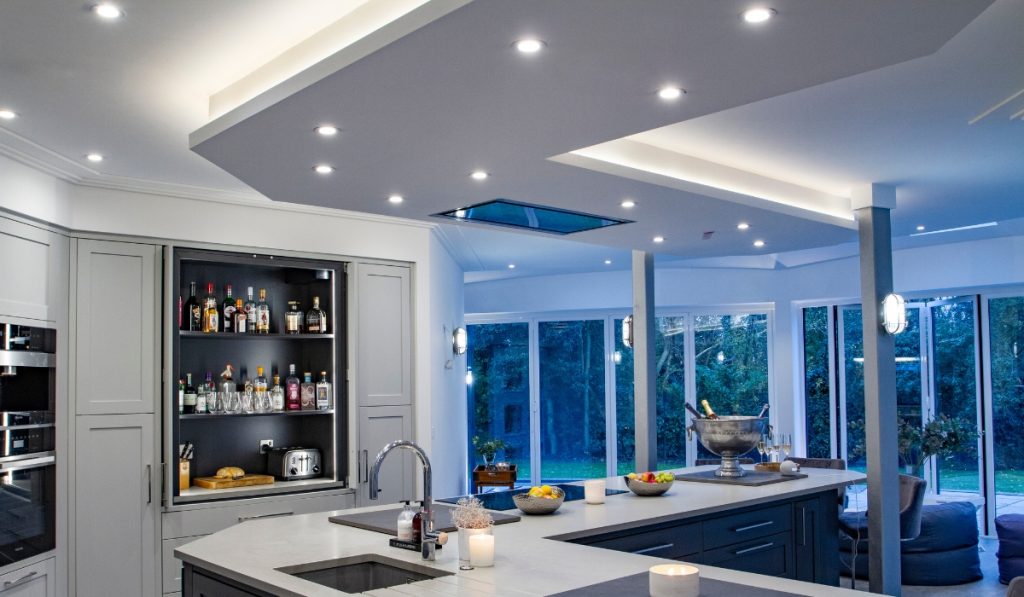
Smart bulbs are a fantastic addition to any modern home, offering convenience, automation, and energy efficiency. But if you're wondering whether these bulbs can be used outdoors, the answer is yes — but with some considerations.
Outdoor-Rated Smart Bulbs
Not all smart bulbs are designed to withstand the harsh conditions of outdoor environments, such as extreme temperatures, humidity, and direct exposure to the elements. Therefore, if you plan to install smart bulbs outdoors, make sure they are specifically rated for outdoor use. These bulbs are built to be weather-resistant and durable enough to handle rain, snow, and dust.
Protected Fixtures
Even if you have outdoor-rated bulbs, it's always a good idea to install them in covered or protected fixtures. Enclosed fixtures will add an extra layer of protection against water and dust while preventing direct exposure to the elements.
Wi-Fi Range
Smart bulbs rely on Wi-Fi to function, so ensure that your outdoor areas have adequate Wi-Fi coverage. You may need to extend your network using range extenders or mesh systems to ensure your bulbs remain connected and functional.
Temperature Considerations
Some smart bulbs may not perform well in extreme cold or heat. While outdoor-rated bulbs are designed to be more resilient, it's still essential to check the temperature operating range to ensure that they will work effectively in your climate.
Automation and Integration
One of the perks of using smart bulbs outdoors is the ability to automate outdoor lighting. You can schedule lights to turn on at sunset, use motion sensors for security lighting, or sync the bulbs with your smart home system for total integration. This adds both convenience and an extra layer of security to your home.
Smart bulbs can be used outdoors, provided they are rated for outdoor use and installed in a protected fixture. By ensuring proper coverage, protection, and compatibility with your climate, you can enjoy the benefits of smart lighting both inside and outside your home.
[related_products is_auto_added="1"]Smart bulbs are a fantastic addition to any modern home, offering convenience, automation, and energy efficiency. But if you’re wondering whether these bulbs can be used outdoors, the answer is yes — but with some considerations. Outdoor-Rated Smart Bulbs Not all smart bulbs are designed to withstand the harsh conditions of outdoor environments, such as […]
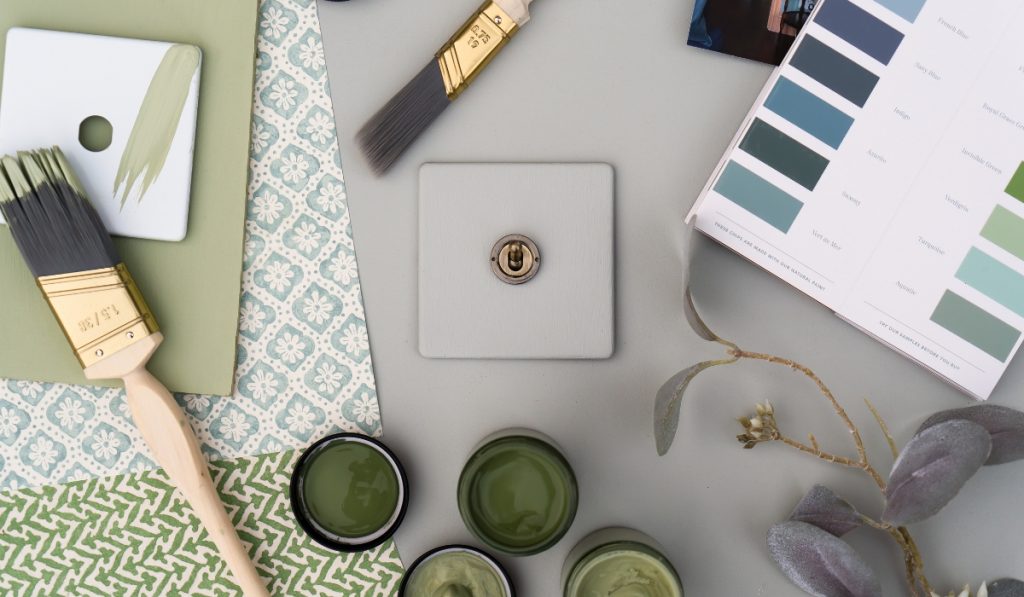
Sage green has increased in popularity in throughout 2024, and for good reason! This soft, muted green is versatile, calming, and works beautifully in a variety of spaces, from contemporary properties to cosy cottages. Whether you're looking to redesign a living room or give your kitchen a fresh update, sage green can create a serene and balanced environment. But what colours can you pair it with to achieve the best results? Let’s dive into the top colour combinations that complement sage green for a harmonious interior.
Soft Neutrals
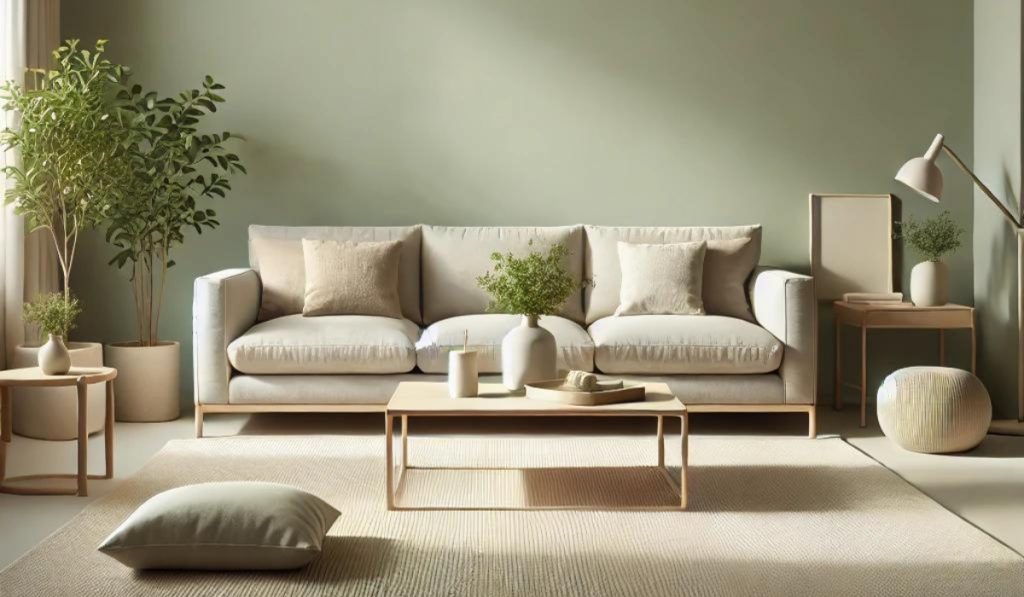
Neutral tones are the perfect partner for sage green as they enhance its calming qualities. Think light greys, cream whites, and beige tones. These soft hues provide a clean, minimal backdrop while allowing the sage green to shine as the focal point.
Pair sage green walls with off-white or light grey furniture, linen curtains, and soft beige throws. Incorporating natural materials like wood and stone can further enhance the neutral aesthetic, giving the space a rustic or Scandinavian feel.
Shades of Pink
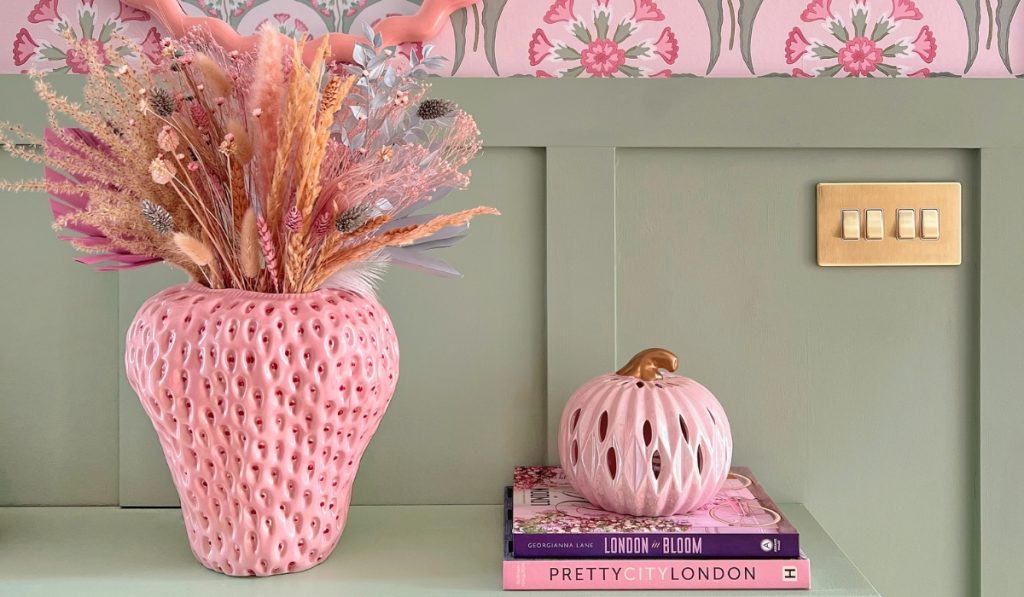
For a more energetic atmosphere, sage green combined with pink is a match made in heaven. This colour palette creates a gentle and playful space, perfect for bedrooms or reading nooks. The brighter tones of both colours blend effortlessly, offering a sophisticated yet warm ambience.
Use sage green as the primary colour for walls or larger pieces of furniture, while adding accents of pink through pillows, rugs, or artwork. Gold toned accents such as brass lights, and even Brushed Brass Sockets and Switches also pair beautifully with this duo for a touch of elegance.
Earth Tones
Sage green is inherently earthy, so it pairs beautifully with other nature-inspired hues such as terracotta, warm browns, and mustard yellow. This delightfully muted combination evokes a sense of grounding and connection to nature, ideal for creating a cosy, inviting atmosphere in any room.
Incorporate terracotta pots, mustard yellow cushions, and wooden furniture to create a warm, earthy vibe. Layering textures like wool, jute, and leather will enhance the organic feel.
Deep Navy

For a more dramatic and modern look, sage green and navy blue make a bold statement together. Navy adds depth and sophistication, while sage green brings balance, preventing the darker tones from feeling too heavy. This combination works particularly well in spaces where you want a more moody, refined look.
Sage green walls or cabinetry paired with navy blue accessories, rugs, or accent walls can create a stunning visual contrast. Add brass or copper finishes to add a new dimension of luxury.
Charcoal Grey
For a more contemporary aesthetic, consider pairing sage green with charcoal grey. This duo creates a sleek, modern look without feeling cold or clinical. The softness of sage green balances the depth of charcoal grey, making it ideal for minimalist interiors.
Use sage green cabinetry or furniture against charcoal grey walls or countertops. Add some black metal fixtures and white accents to keep the look fresh and sharp.
Golden Yellow
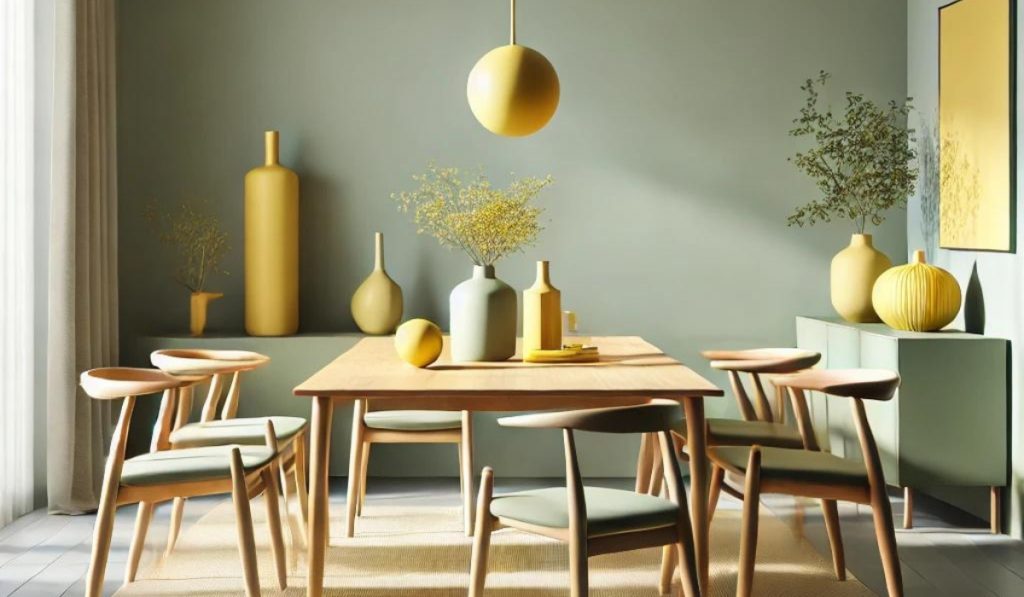
If you want to bring some vibrancy and joy to a room, pair sage green with golden yellow. The warm, sunny tone of yellow brightens up the muted green, adding a playful and energetic vibe without being overpowering.
Use sage green as the base colour for walls or large furniture, and add pops of golden yellow through accessories like cushions, lamps, or wall art. This combination works well in spaces with lots of natural light, enhancing the warmth and cheerfulness of the room.
Crisp White

For a fresh, clean look, sage green and crisp white is the ultimate combination. White adds brightness and airiness to the space, while sage green provides a calming balance. This pairing is perfect for spaces where you want a serene, uncluttered aesthetic.
Opt for white cabinetry or tiles paired with sage green walls or use white bedding with sage green accents like throws or cushions. This combo is also ideal for small spaces, as light colours open a room more effectively.
Sage green is a versatile, timeless colour that works well with a variety of palettes, from soft neutrals to bold contrasts. Whether you're going for a cosy, natural look or a sleek, modern aesthetic, there's a perfect colour combination to complement sage green in any room. Use these ideas to create spaces that are serene, stylish, and reflective of your personal taste.
[related_products is_auto_added="1"]Sage green has increased in popularity in throughout 2024, and for good reason! This soft, muted green is versatile, calming, and works beautifully in a variety of spaces, from contemporary properties to cosy cottages. Whether you’re looking to redesign a living room or give your kitchen a fresh update, sage green can create a serene […]